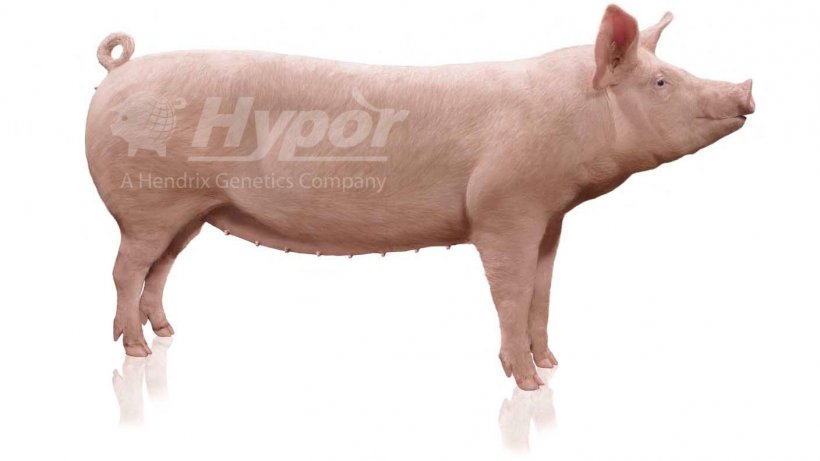Hypor is part of Hendrix Genetics, the world's largest multi-species genetic company.
Their nucleus farms are located, and interconnected, in North America, South America, Europe, and Asia, with the goal of supplying its customers worldwide.

Revilla tells us that, at the genetic nucleus level, they try to make every farm a "mirror" of each other so that, in the event of problems in a genetic nucleus, the company can continue to provide service to customers from any other nucleus.
He explains that Hypor's goal is to maximize overall genetic progress to produce benefits across the entire pork chain, rather than limiting itself to specific phases of the production chain such as reproduction or finishing.
In addition, the combination of genetic evaluation, phenotyping, genomic selection, and investing in technology allows them to calculate the value that a breeding animal will transmit on to its progeny. The large amount of data generated by each of these pillars is managed by our experts in an automated way in order to make individualized genetic predictions in the most accurate way, allowing us to take the most appropriate decisions at each stage of selection.
The use of genomics makes it possible to obtain a more accurate genetic value of each individual since birth. In this way, each pig will have its own genomic value.

The Libra sow.
Selection criteria
Although Hypor has and produces a wide range of terminal sires that cover all market demands (High conformation Pietrain, High growth Pietrain, Duroc selected on efficiency and Duroc selected on meat quality), in this article, we focus on the selection criteria for dam lines.
Manuel Revilla says that the selection criteria are the same for the Hypor Landrace and Hypor Large White lines.
The distribution of the criteria can be seen in Figure 1.

Selection criteria for Hypor Landrace and Hypor Large White lines
Seventy percent of the criteria are related to reproductive efficiency:
- Prolificacy (27%) The goal, in terms of sustainable selection for litter traits, is that any increase in the number of total born piglets must be accompanied by the same (or greater) increase in the number of piglets born alive and piglets weaned. He states, "If the sow can't farrow and wean more piglets, it's not a sustainable improvement. That's why our standard is to get 16 total born, 15 born alive, and 14 piglets weaned."
- Piglet quality (17%) Aimed at obtaining piglets with good, uniform birth weights. Not only the individual birth weight but the litter as a whole is evaluated. Efforts are focused on ensuring that no piglet is born weighing less than 1 kg (2.2 lb). He remarks: "In fact, today 90-96 % of our piglets, depending on the line used, weigh more than 1 kg".
- Maternal excellence (13%) Attention is focused on the number of functional teats. This is why the objective is to reach a standard of 16 teats in total: 4 pairs above the umbilicus and 4 pairs below. With the ultimate goal that the number of functional teats is equal to the number of total born piglets, ensuring access to more and better colostrum. Thus, all GP sows have a minimum of 16 functional teats.
- Stayablility (8%) A measure of longevity where the reproductive cycle of the GP sows in the genetic nucleus is taken into consideration, with the objective of obtaining productive dams throughout their productive life.
- Social behavior (5%) Guaranteeing a female that is easy to handle regardless of the system used. This is done by evaluating the animals with a checklist.
The remaining 30% of the selection criteria for dam lines is reserved for carcass and fattening criteria.
Manuel Revilla points out that "the sow represents 50% of the finishing pig's genes, which is why we consider the balance between finishing traits and reproductive indexes to be essential. For this reason, we include growth and conversion parameters in the selection index of our females, to guarantee animals with fast and efficient growth capabilities."
Finally, we asked about how selection is performed considering the morphology of the animals. He explains that a morphological evaluation of all the animals is done, in which any abnormalities are recorded. The presence of certain anatomical abnormalities implies the exclusion of the animal, regardless of its genetic value and, depending on the case, it also affects their family members. He gives us an example: if an animal is detected with a scrotal hernia, the animal itself and its progeny will be removed from the genetic improvement program.




